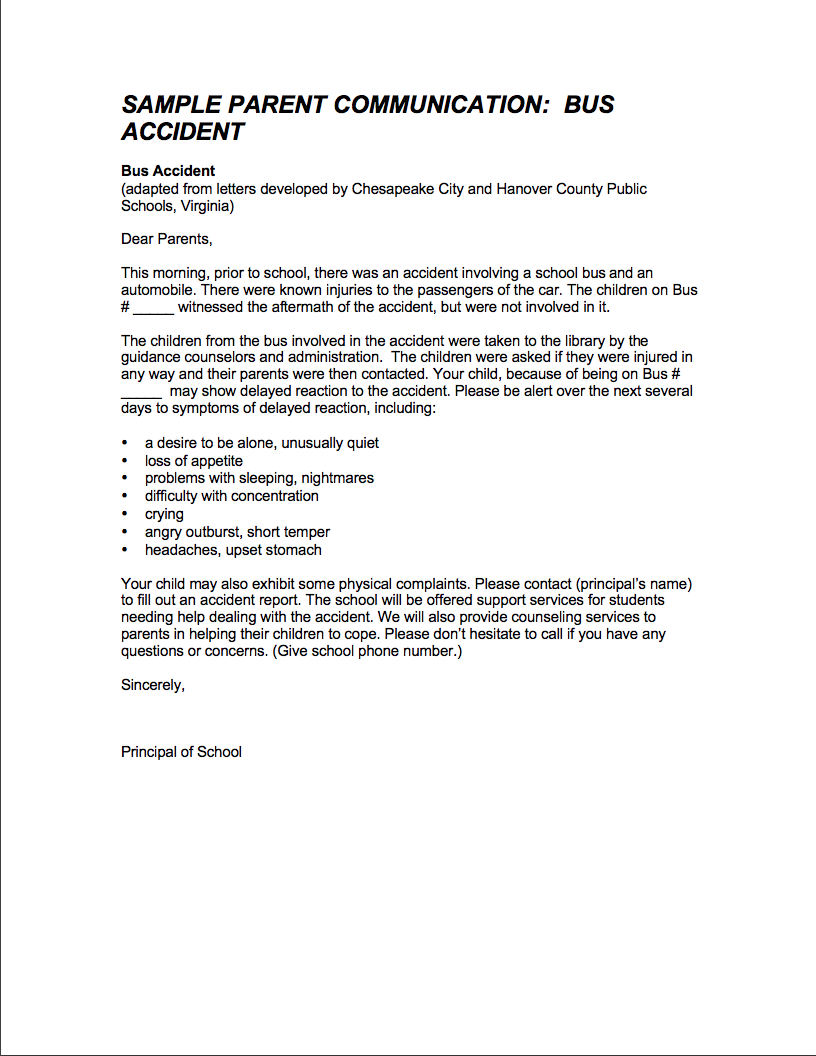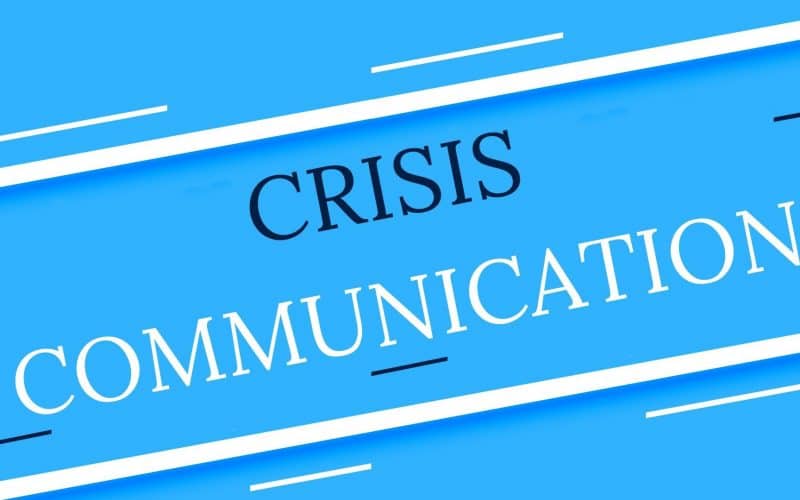Life would be a lot simpler if emergencies came with plenty of notice. There will be no need to plan ahead of time for them.
Regrettably, this is not the case. Crisis strike when we least expect them. And, if your company waits until a crisis occurs to begin preparing, you will almost certainly fail to prevent disaster. This is why a crisis communication plan is essential for any company.
Let’s talk about what crisis communication is and also how you can build a strategy to protect your organization in any situation in this article. We’ll also look at some real-life examples of crisis communication plans to learn from.
What is Crisis Communication?
The dissemination of information by an organization to resolve a problem that affects consumers and/or the organization’s credibility is referred to as crisis communication.
The idea is that reputation happens whether or not you manage it, so a company should have some say in the narrative. Not only that, but customer satisfaction rises as standards are developed and maintained.
Although crisis communication can be a reactive process, having a crisis communication strategy in place can help make the process easier for your team members.
What is a Crisis Communication Plan or Strategy?
A crisis communication plan is a collection of protocols that a company should use to prepare for an emergency or unexpected occurrence. These plans include what to do when a crisis arises, how to interact with the media, and how to avoid the problem from recurring.
Crisis communication strategies concentrate on the company’s reaction and how it can interact with its stakeholders during a crisis. These measures ensure that information is sent to staff, partners, clients, the media, the general public, and all other important stakeholders.
Most importantly, a crisis communication plan ensures that information is released quickly and that the message is clear across all organization channels during a crisis. This message is heavily influenced by the nature of the crisis and how both stakeholders are affected by it.
“What constitutes a crisis?” you might be asking. Let’s look at some examples below.
Examples of Crisis Scenarios
A variety of scenarios may result in a business crisis that necessitates communication from your organization. The following are some of the most common forms of crises:
- Financial: A financial loss, such as declaring bankruptcy or closing a shop.
- Personnel: Workforce changes that could affect operations or prestige, such as employee furloughs or layoffs.
- Organizational: – An apology for negligence or misconduct caused by organizational activities.
- Technological: Technological failure resulting in outages resulting in reduced functionality or functionality loss.
- Natural: A natural disaster that necessitates a public announcement or a change of procedure. Defining safety procedures in the middle of a health crisis, for example.
Furthermore, something else that could impede or halt business continuity is an example of a crisis that necessitates contact with consumers and/or the general public.
Although the communication plan can vary depending on the crisis, the following are some typical tactics that companies use to provide an effective response.
Who Needs Communication in a Crisis?
Businesses and organizations face diverse crises, misunderstandings, and difficulties. The globalization of the universe has also greatly contributed nature to this and as a result, there is a need for apt response and adequate attention to the crisis.
Read Also: Crisis Management: Detailed Guide for Planning Crisis Management
Crisis Communication Strategy
#1. Response from a Spokesperson
When the business makes a mistake, the only thing you can do is apologize and show your humanity. The most efficient way to do this is to appoint a representative to speak on your brand’s behalf. After all, it’s much easier to relate to a single person than it is to a group of lawyers.
This individual could be your CEO, a company executive, or whoever you believe is best to represent your company. It is critical to select an effective communicator because their actions will influence how your key stakeholders react to the situation. If they can make your company appear human and your mistakes appear manageable, they will be able to keep stakeholder support.
#2. Preventative Damage Control
Even if things are going well now, you should always be prepared for a crisis. Don’t worry, you’re not a pessimist because of this. Instead, it encourages you to be proactive.
Proactive damage control is what you do before a crisis occurs to reduce or prevent its effects. Adding protection software that tracks and backs up company data, for example, will help you prevent a malware crisis. You should also prepare the staff to be on the lookout for suspicious or dangerous emails that might arrive in their inboxes.
#3. Escalation of the Case
Person crises may often be resolved until they hit a viral tipping point. In these scenarios, it is beneficial to have an escalation mechanism within the customer service team that can resolve the problem before it becomes out of hand.
Social networking is a fantastic marketing tool that helps businesses to reach people all over the world. This scope, however, works both ways, as customers can share stories, photos, and videos for everyone to see. A viral video that portrays your company negatively can lead to millions of people having a negative view of your brand.
Crisis situations are dealt with both in-person and online. As a result, the company needs a social media strategy to handle the digital buzz surrounding your brand. This may involve appointing more representatives to track your social media or informing followers of new knowledge. However, regardless of how you use it, social media cannot be avoided while the business is in the midst of a crisis.
#5. Collection and Analysis of Customer Feedback
Often a crisis occurs but it does not make the front page of the news or go viral on social media. Instead, it’s quietly influencing the clients and triggering turnover, but you’re not aware of it because you’re not collecting enough feedback from them.
Collecting reviews is an ideal way to avoid a crisis. This is due to the fact that it offers insight into how customers perceive your business. This helps you to identify big roadblocks until they become a crisis. Furthermore, it allows consumers to provide negative feedback that you can use to enhance the experiences of other customers.
When confronted with a dissatisfied or escalated customer, our performance team sees this as an opportunity to gather customer input. They begin interactions by asking customers to reflect on their experience and address any disappointing aspects. This assists our staff in developing actionable measures that they can use to align themselves with the needs of the consumer.
Writing a crisis communication plan can be daunting for some companies, so let’s get started with the steps below.
How to Create a Crisis Communication Plan
#1. Determine the plan’s goal.
Before you begin, your team should determine what the plan’s goal is. It can be as basic as: “This strategy establishes a mechanism for interacting with internal and also external stakeholders in the case of a crisis that threatens the organization’s credibility or usual business functions.” This means that every component of your plan is aligned with this shared purpose.
#2. Determine who the stakeholders are.
It is important to know who the proposal is intended for when writing it. Make a list of all stakeholders you’d like to keep updated on the crisis.
Employees, consumers and users, associates, investors, media outlets, the government, and the general public are most likely on this list. In the case of a location-based crisis, the latter is likely to involve social media followers or people who live nearby. In your strategy, provide all appropriate contact details for each of these classes.
#3. Create a hierarchy for sharing crisis information.
The person or team that declares a crisis is not necessarily in charge of crisis communications. As a result, a portion of the strategy should be devoted to developing a hierarchy detailing how knowledge should be exchanged within the organization. That way, no matter who discovers the impending crisis, they’ll know who to contact first.
This order is determined by the organization of your team. The first step might be to alert the organization’s CEO or president, followed by the head of marketing or public relations. The plan should also specify what information should be disclosed to these parties right away. This could include information about the crisis, the origin of the incident, and any existing backlash.
#4. Assign people to the task of creating fact sheets.
Your plan should specify who on the team is in charge of creating crisis fact sheets. Fact sheets are collections of known facts about the crisis. They keep rumors and misinterpretations from reaching the media.
You should also set a deadline for when these fact sheets will be completed. Depending on the severity of the crisis, you may require them within 24 hours, six hours, or even 30 minutes.
#5. Identify and evaluate examples of crisis scenarios.
When a crisis occurs, you will most likely feel overwhelmed. Your mind will race, and you will feel pressed to answer phone calls, social media mentions, and media inquiries.
This is why it’s a good idea to plan out common situations ahead of time. Natural disasters, delays in regular business operations, consumer or employee accidents, and product tampering are examples of emergencies that may impact the company.
#6. Recognize and react to frequently asked questions.
People will have questions during every crisis, no matter how large or small. The public, whether they are consumer advocates or reporters, would want to know the facts. After all, in most circumstances, businesses are presumed to be guilty unless proven innocent.
Crisis communication strategies will assist you in identifying and answering questions that you might be asked during your crisis scenarios. For example, if a natural disaster hits your headquarters, you might be asked, “Was anyone hurt in the incident?” and “How long would it take for the company to resume regular operations?”
#7. Determine potential threats.
There will always be pros and cons, no matter how well-thought-out the crisis communication strategy is. Naturally, you’ll go for the strategy that maximizes benefits while minimizing costs. However, the costs must also be considered.
You should include a list of possible risks in each strategy. That way, if the strategy fails, you won’t be caught off guard. You will have prepared yourself and assisted in the recovery from these additional losses.
During a crisis, proactive communication is critical. To provide as much transparency as possible, teams should concentrate on preparing press materials and disseminating crisis information. The more information you keep, the more curious the public will be about what you’re hiding.
Reactive communication is just as important as proactive communication. During a crisis, it is critical that team members focus on social monitoring. Any negative social media mentions should be addressed promptly and consistently. Parts of the strategy should be devoted exclusively to social media crisis management.
Now that you know how to create your own crisis communication plan, take a look at the examples below for some additional writing inspiration.
Examples of Crisis Communication Plans
#1. Example of a Plan for University Crisis Communication
Proactive Damage Control as a Crisis Communication Strategy
It is critical in a university crisis communication plan to concentrate on emergencies that may disrupt regular school and administrative functions. For example, my college still emails students if a dangerous incident happens on or near campus and provides us with a list of safety tips. Universities also prepare for emergencies such as marches or demonstrations, community member accidents or deaths, and negative news about the school.
The University of Washington has a comprehensive crisis communication strategy in place to ensure community members’ safety and security. The primary audiences for contact at a university include students, faculty, staff, parents, and alumni, as well as tourists, transient residents, the general public, and the media.
#2. Plan for Communicating During a Fatal Accident
Spokesperson Response as a Crisis Communication Strategy
Southwest has consistently ranked as one of the world’s best airlines. However, this does not mean that the business is free of mishaps.
An engine failure on Flight 1380 resulted in the death of a passenger, marking the company’s first in-flight fatality. Gary Kelly, the company’s CEO, quickly reacted to the situation by apologizing to the victim’s family. Furthermore, he took down all of their social media advertisement and made personal phone calls to travelers, providing assistance and therapy services.
Although it is difficult to think about such dire situations, they do arise and have an effect on companies. Despite the fact that Southwest had never experienced an accident like this before, the CEO was prepared for it and expressed sincere regret both through his words and through the actions of his company.
#3. Plan for Unexpected Crisis Communication
Spokesperson as a Crisis Communication Strategy
If you’re familiar with Tide Pods, you might recall the trend of people eating them — yes, eating them. As you would expect, participants in this fad became ill after drinking laundry detergent, and also Tide was forced to launch a campaign urging consumers not to eat its product. It’s safe to assume that the company’s marketing staff was not expecting this problem to arise.
Nonetheless, the team got to work and devised a brilliant solution to the crisis. They collaborated with former NFL player Rob Gronkowski to create a PSA for their customers.
This crisis communication plan example demonstrates that it is difficult to “expect the unexpected,” but when it does occur, your team must respond quickly to address the problem.
#4. Plan for School Crisis Communication
Proactive Damage Control as a Crisis Communication Strategy
Schools, like universities, must deal with crises quickly, particularly if they disrupt the regular class schedule. Since schools deal with children, it is particularly important that parents and guardians are made aware of any conditions that can jeopardize their children’s education, protection, or health.

The Virginia Department of Education has developed a comprehensive management strategy that includes crisis communications. The plan highlights numerous crises that would necessitate contact with parents, such as a school bus crash, and provides letter templates that can be distributed easily.
#5. Plan for Restaurant Crisis Communication
KFC, a restaurant chain, found itself in an unfortunate situation in 2018 when it ran out of chicken to feed its customers. With its brand based on its 11-spice fried chicken recipe, this was most likely an unanticipated crisis.
However, KFC’s marketing team immediately got to work and was able to turn the situation around. They posted videos and tweets like the one below, in which they jokingly apologized for the shortage and demonstrated the brand’s modesty.

This is why restaurants must have a crisis communication plan in place. Plan for the spread of food-borne disease, unsanitary working conditions, and, of course, distribution problems that impact food supply.
#6. Plan for False Accusation Crisis Communication
Proactive Damage Control as a Crisis Communication Strategy
Some crises arise when consumers tamper with goods in an attempt to garner media coverage or spark a lawsuit. When Pepsi cans were tampered with in supermarkets in the early 1990s, this was a big issue. Customers in over 20 states reported finding sharp objects in their Pepsi cans when consuming the beverage.
Although the general public’s response was negative at first, the company stuck to its communication strategy and assured consumers that the canning process was tamper-proof. Marketers made videos of the canning process available to the public and allowed reporters to visit their facilities. Moreover, the media and the general public concluded the crisis was a hoax after the FDA cleared Pepsi and surveillance videos caught people placing things in cans.
The most important thing is to keep stakeholders updated when a crisis occurs so that they understand your company prioritizes consumer protection over saving face or income.
What constitutes Effective Crisis Communication?
If the crisis that may arise in your business will be handled effectively, there is a need for the communication to be in real-time. Let’s consider how to do effective crisis communication in real-time.
#1. Ensure Real-time Communication
Real-time communication will ensure every employee and stakeholder get information promptly
#2. Accessible information
In addition to real-time communication, ensure you used a means that permits people to get access to information easily.
#3. Messages should be sent to the right people
Know the capability of your employees their strengths and weaknesses. This will help you in assigning and delegating responsibilities to each and every one of them.
Why Is Crisis Communication Crucial?
Crisis communication plans help companies respond quickly in emergencies. It is a crisis strategy with communication and prevention procedures.
Which Crisis Management Principle Is Most Important?
Be upfront with key audiences. Inform your personnel directly (before the media). Communicate with media. “Perception is reality.” Who’s right doesn’t matter.
How Do You Handle a Crisis?
Honesty, transparency, accountability, and consistency underpin good crisis communications. That involves being honest, not blaming others, and doing what you say.
Which Aspect of Crisis Communication Is Most Crucial?
Crisis communication is crucial. Media training helps spokespeople handle stressful media and public interactions.
What’s the Most Typical Crisis Communication Error?
In a crisis, not responding quickly is the biggest communication failure. Even if you’re unsure, speak up. Inaction paralyzes organizations, fearful to say the wrong thing.
Conclusion
Preparing a CMP and BCP requires money, time, and effort, but it is critical that a company remain alert to potential new threats while still monitoring current ones. The COVID-19 pandemic demonstrated that a crisis can strike suddenly and from unexpected sources. A company can emerge from a crisis better, stronger, and more resilient if it can predict and assess possible risks and has a strategy in place to adapt and recover quickly.
Crisis Communication FAQs
What is crisis communication and why is it important?
Crisis communication is the circulation of information by a company to address any crisis that impacts customers and the brand and its reputation. Why is Crisis Communication Important? Crisis communication is important because it outlines your company’s response to different crises, including Financial.
What is the most essential part of crisis communication?
A crisis communication plan can be broken down into six elements:
- Detailed plan. The plan should outline and explain how your organization will communicate about the crisis and handle the crisis. …
- Crisis communication team. …
- Key messages. …
- Internal communications procedures. …
- Contacts and media list. …
- Appendice
What is the difference between risk communication and crisis communication?
Crisis communication deals with things that do go wrong. Risk communication deals with things that might go wrong. Risk communication responds to any event that could cause public concern and could focus media attention on an organization
At what point does a crisis become an emergency?
Generally, crisis emergencies have the following characteristics: The threat has never been encountered before, so there are no plans in place to manage it. It may be a familiar event, however, it is occurring at unprecedented speed, therefore developing an appropriate response is challenging.






